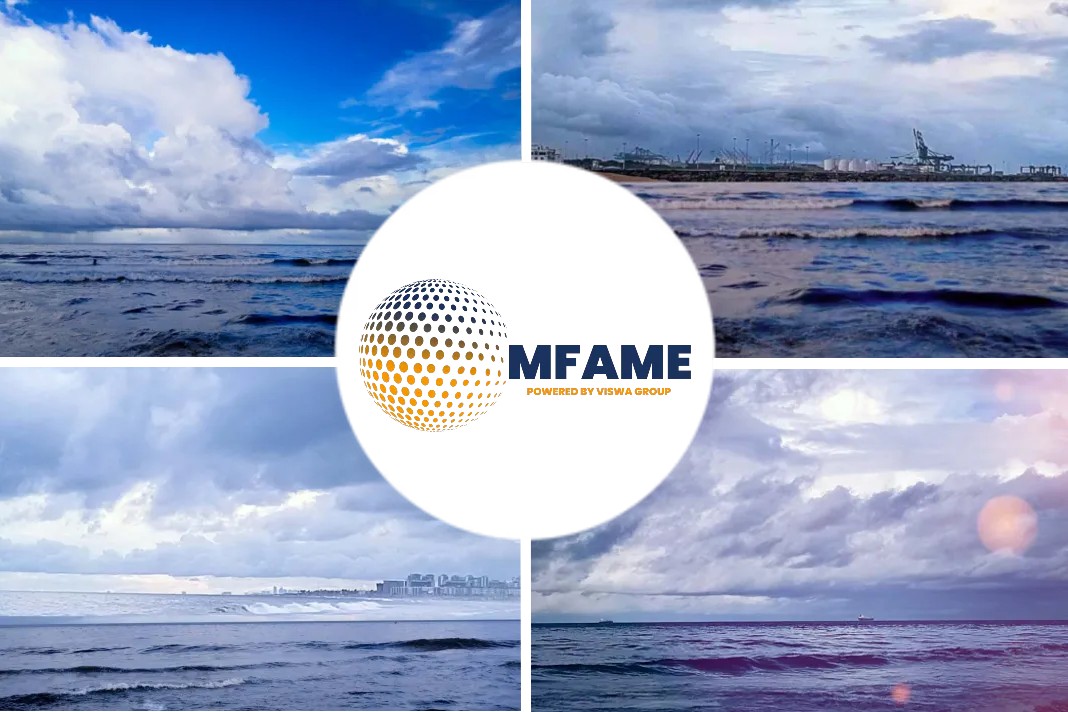A voluntary incentive program to reduce the speeds of cargo ships traveling through and around the Santa Barbara Channel is paying off in cleaner air and fewer whale casualties, according to the Santa Barbara County Air Pollution Control District and other local agencies.
The collection of local and national agencies running the incentive program announced the results from the 4½-month period in 2016 at a meeting of the Channel Islands National Marine Sanctuary advisory council earlier this month at the Santa Barbara Zoo.
Fifty transits by 10 international shipping lines reduced their speeds to 12 knots — about 13.8 mph — or below on their way to the ports of Los Angeles and Long Beach, said Jessica Morten, a California Sea Grant State Fellow with the marine sanctuary.
She said those slower trips between July 1 and Nov. 15 saved 27½ tons of nitrogen oxides and 1,094 metric tons of greenhouse gases.
By comparison, an average passenger car with average use emits a little over 18 pounds of NOx a year, according to the Environmental Protection Agency.
Even small reductions in speed, the program’s partners say, dramatically reduce the likelihood of a fatal collision with the channel’s blue, humpback, gray and fin whales, some of which are endangered.
Whale strikes are difficult to track, but indications show that slower ship speeds have “greatly diminished” collisions, Morten said.
The program’s first run in 2014 featured seven companies and 27 transits, and saw a 50-percent reduction from those ships’ baseline emissions, she said.
“The idea behind the 2014 program was pretty simple, but definitely an unconventional, novel approach,” she added.
Other program partners include the air pollution control districts in Santa Barbara and Ventura counties, the National Marine Sanctuary Foundation and the Volgenau Foundation.
“This is the type of program that could completely be scaled up,” said Chris Mobley, sanctuary superintendent with the Channel Islands National Marine Sanctuary.
The international array of 2016 participants included CMA CGM, Evergreen, Hamburg Sud, Hapag-Lloyd, Holland America Line, K Line, Maersk, MOL, NYK Ro-Ro and Yang Ming.
Representatives from several of the companies were on hand at the Jan. 20 meeting to be recognized for their participation.
Morten said that ships looking to participate had to have a normal operating speed of at least 14 knots. Outside the program, the enrolled ships’ usual speeds ranged from 14 to 20.5 knots — 16.1 to 23.6 mph.
To join, applicants must also be participating in the speed-reduction programs of the Los Angeles and Long Beach ports.
After receiving 376 transit applications for 2016, the program enrolled 62 transits, 50 of which reduced their speeds to 12 knots. Fourteen of those brought their speeds down an additional two knots.
In addition to positive public relations, the companies received financial incentives that ranged from $1,500 to $3,750 for successfully slowed transits. Higher incentives were paid to historically faster ships, which emit more greenhouse gases.
Companies could receive bonuses for documenting whale sightings, reducing their speed to 10 knots, or providing proof of schedule adjustments that demonstrate their ships weren’t increasing their speeds elsewhere to make up for lost time, according to program organizers.
The shipping trade “is huge and always continues to grow,” said Eduardo Cestafe of Hapag-Lloyd’s Los Angeles/Long Beach office.
“Considering the Los Angeles and Long Beach port complex is the largest in North America, I believe this program has a lot of potential to grow.”
Those two ports — respectively the 19th and 21st busiest in the world, according to the World Shipping Council — saw a combined 4,600 arrivals in 2016, Morten said.
“In the grand scheme of things, (the greenhouse gas reductions were) not big, but it’s showing that there is willingness to participate,” Mobley said.
Did you subscribe for our daily newsletter?
It’s Free! Click here to Subscribe!
Source: Noozhawk

















